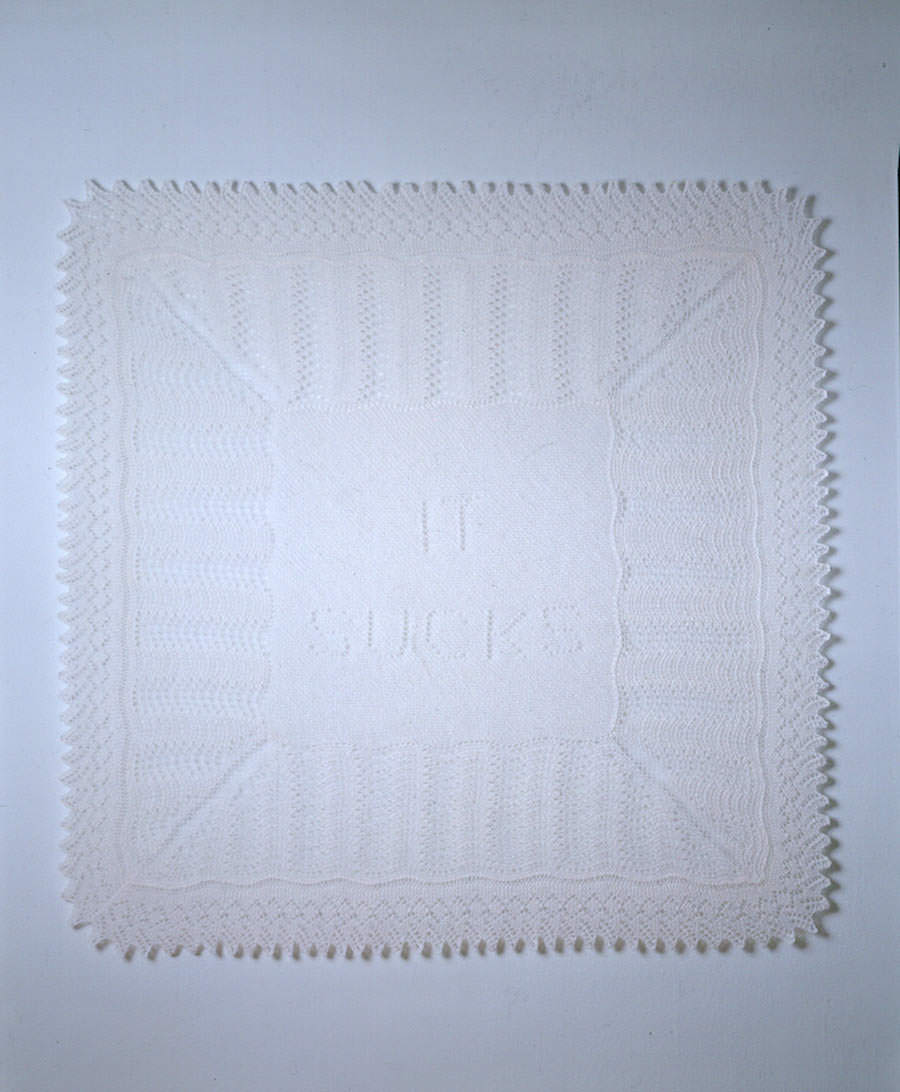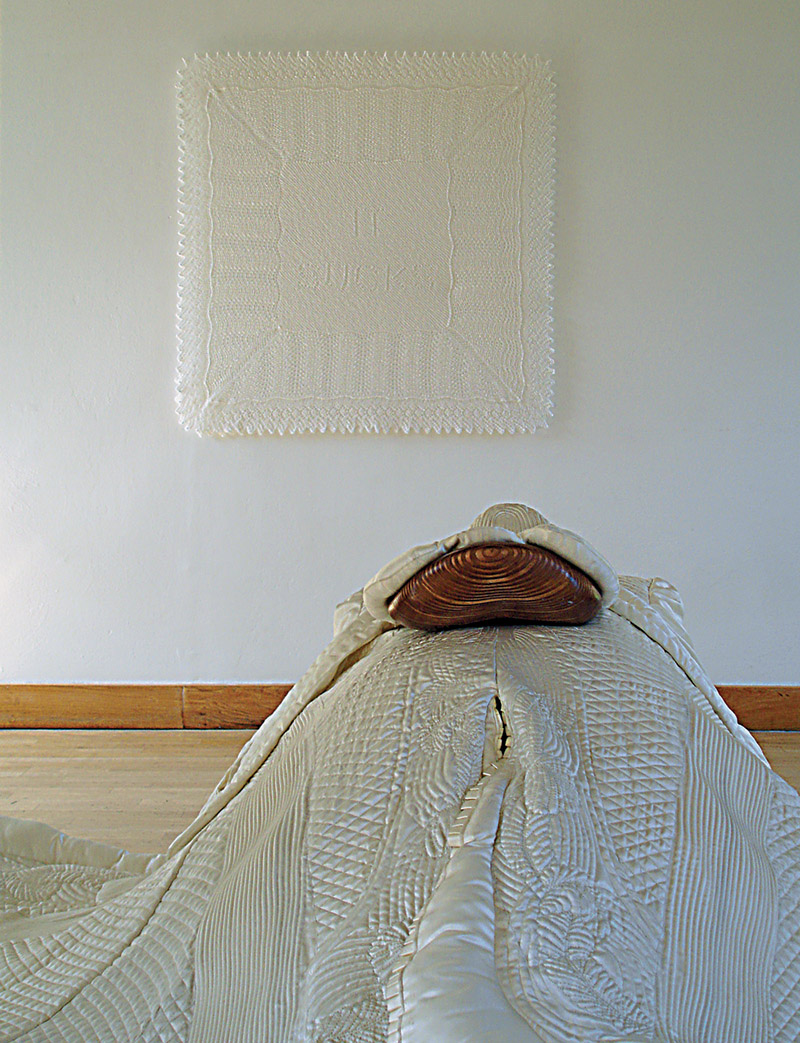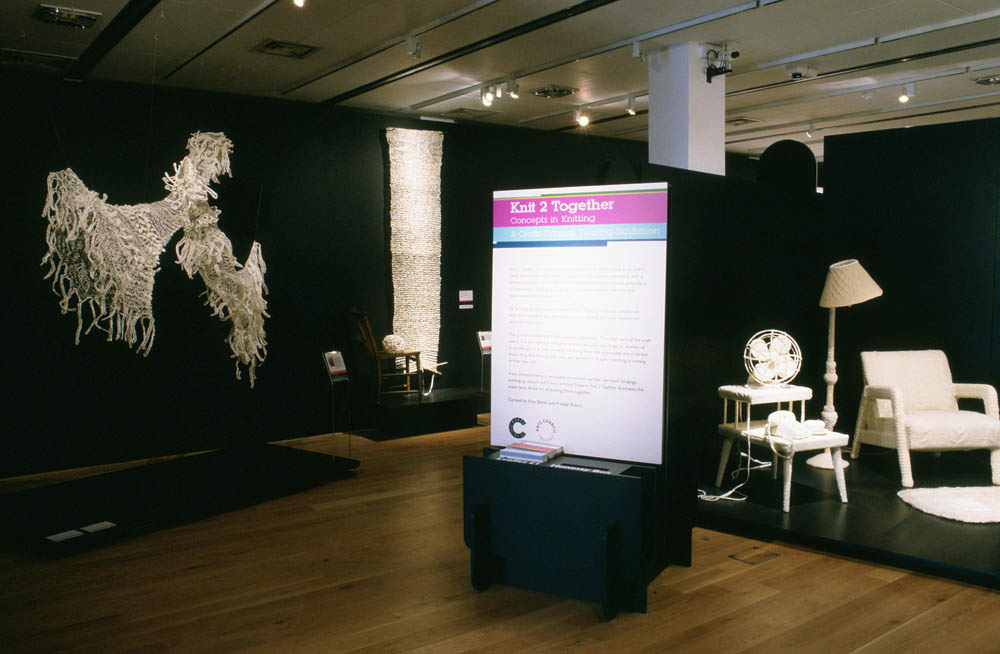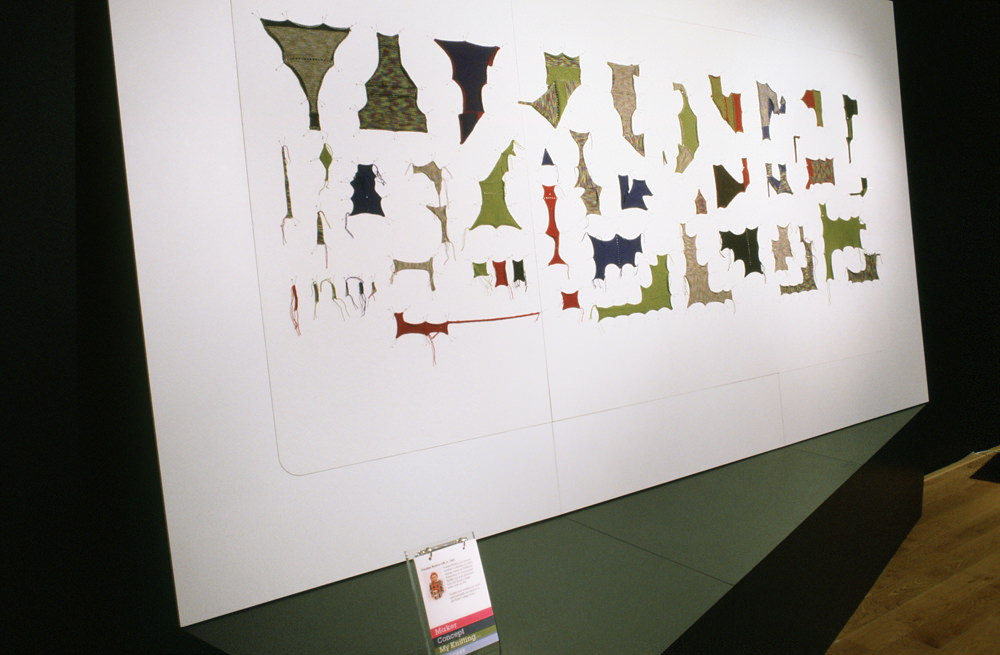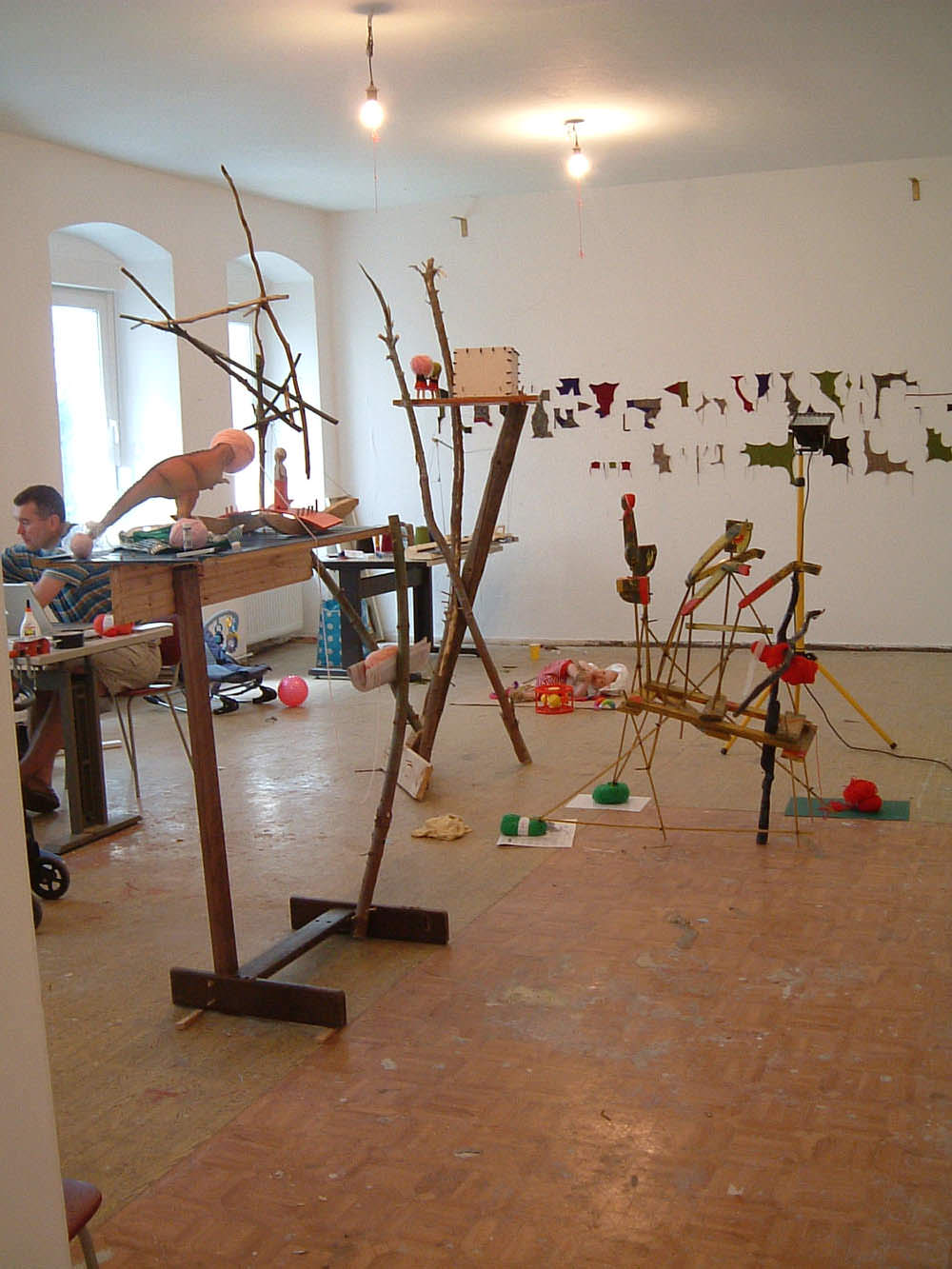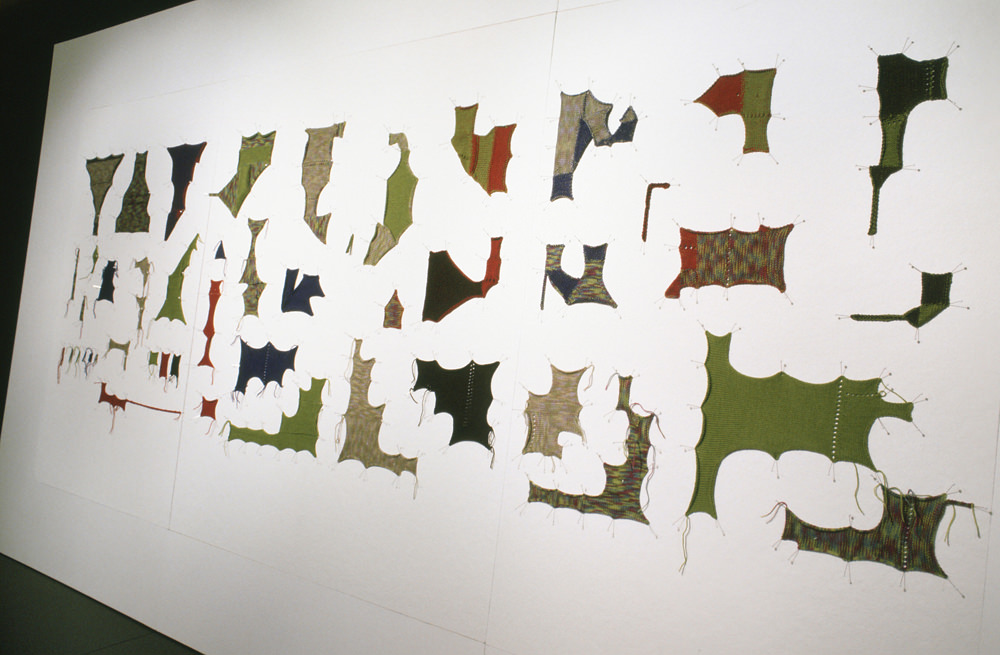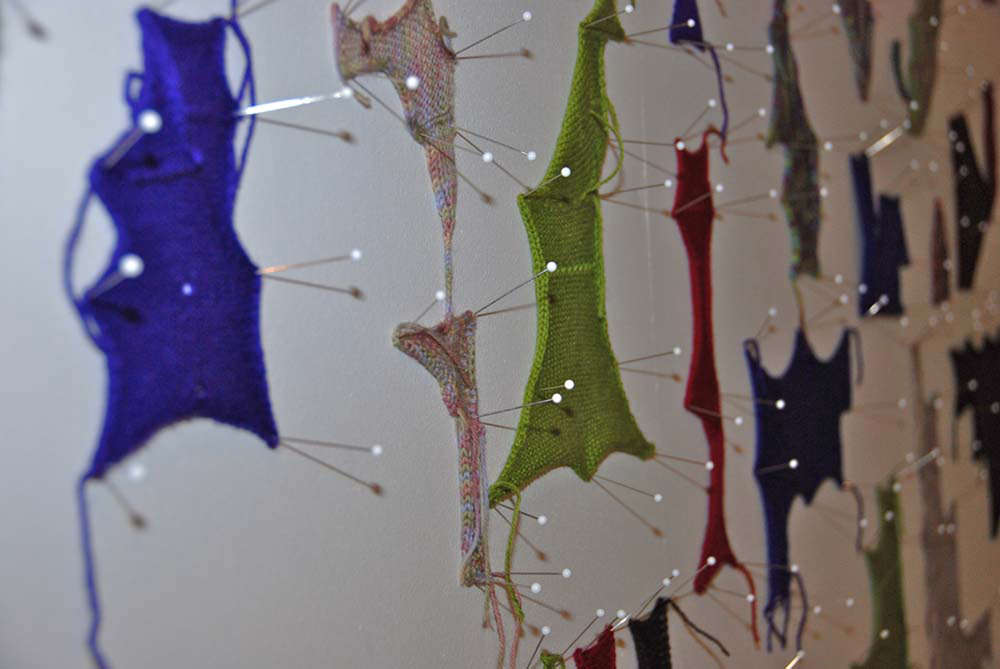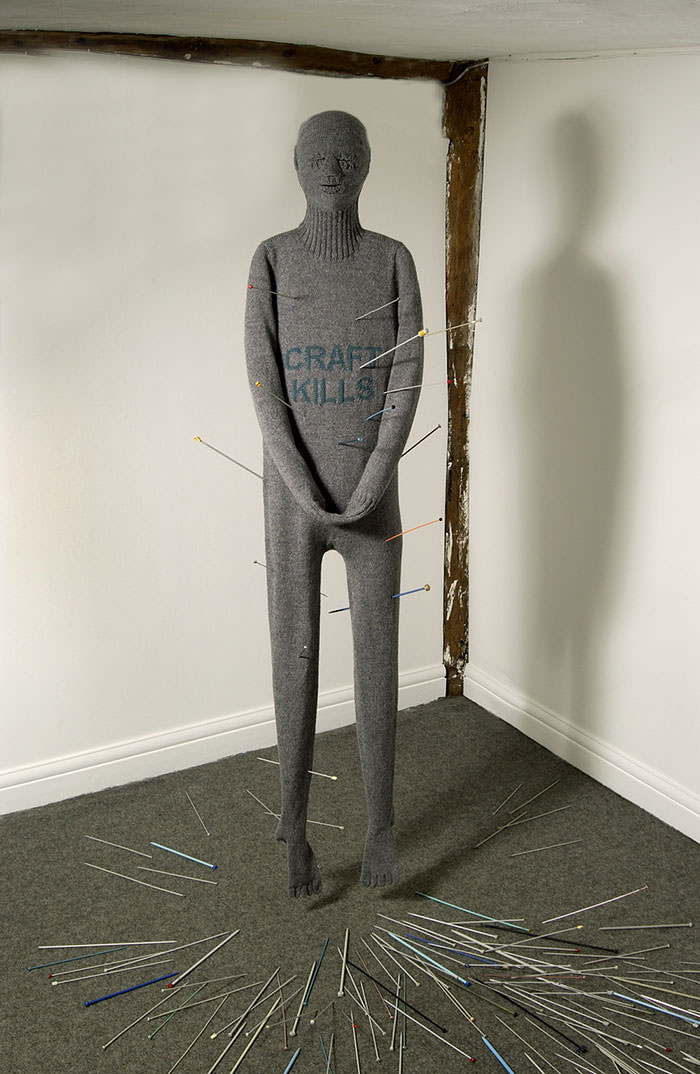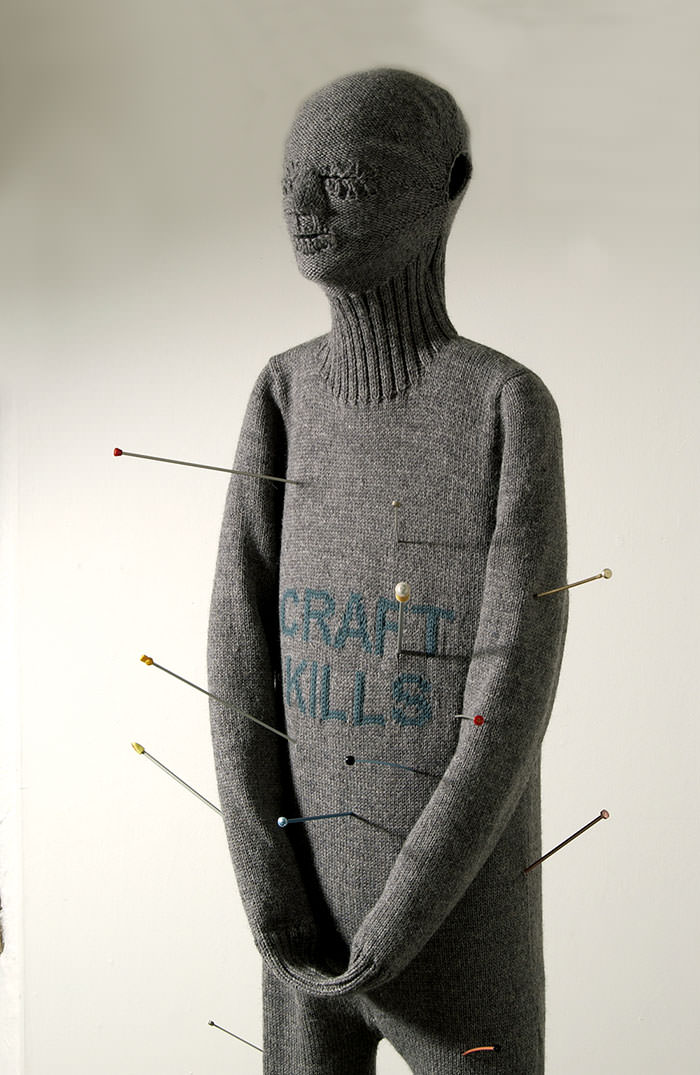Pump House Gallery, Battersea Park, London
17 August – 9 October 2005
http://pumphousegallery.org.uk
Curated by Freddie Robins and Sandra Ross
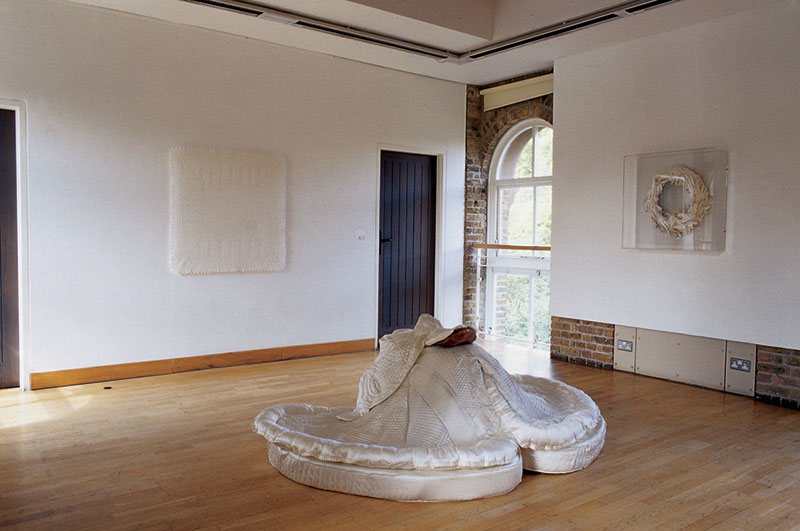
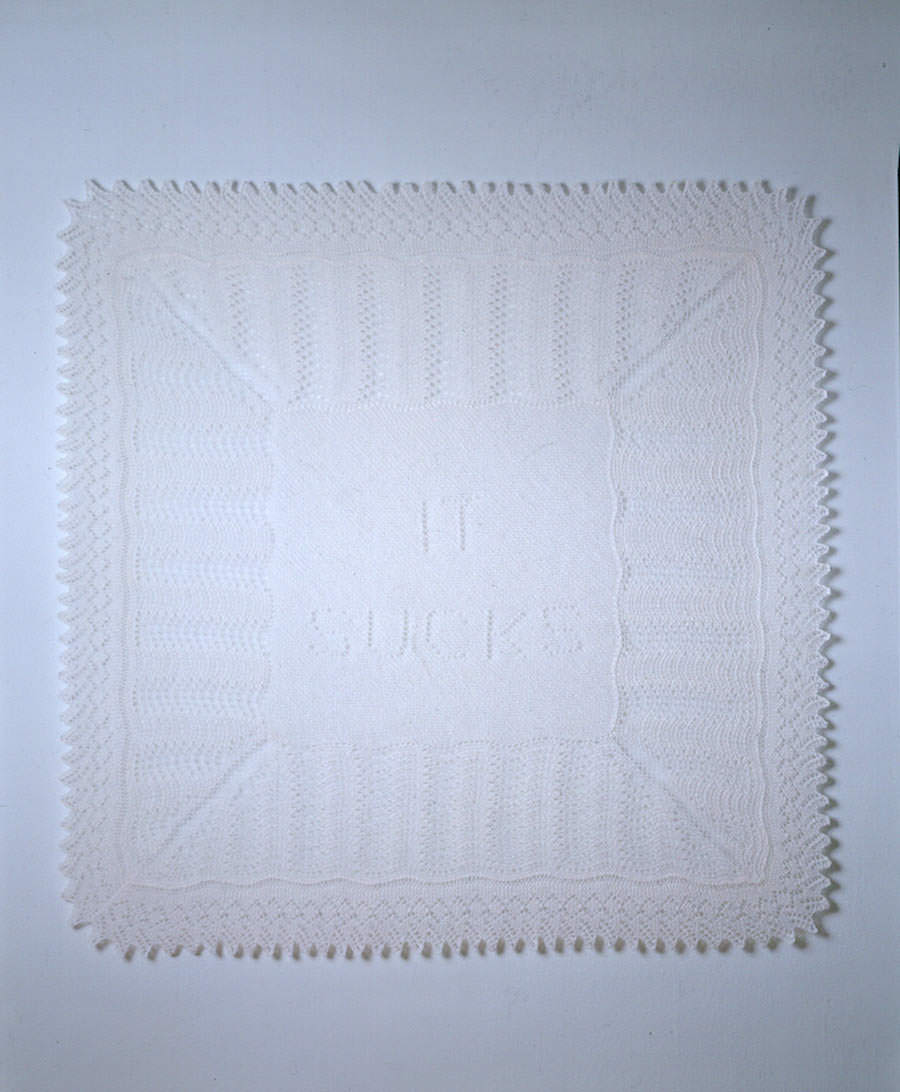
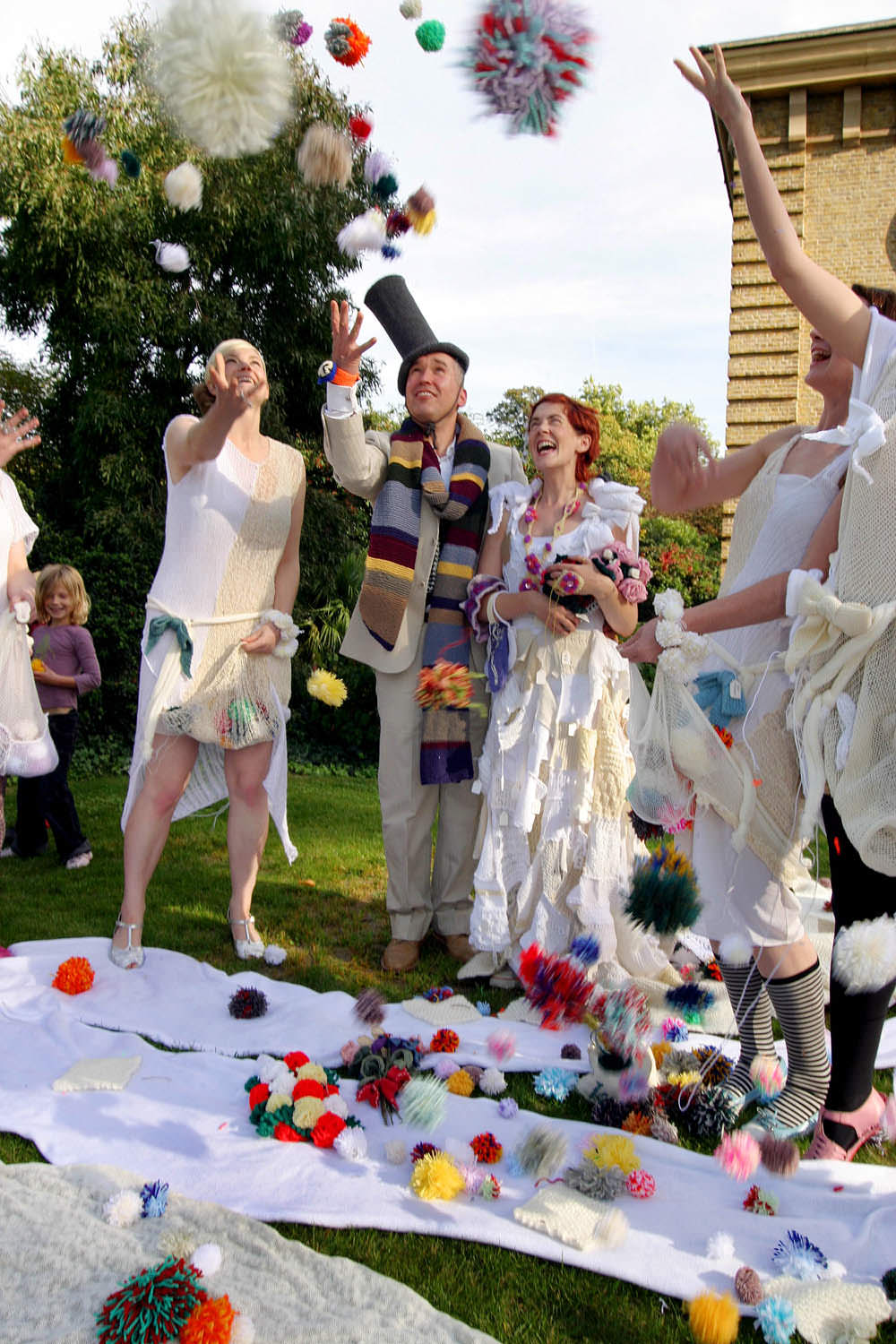
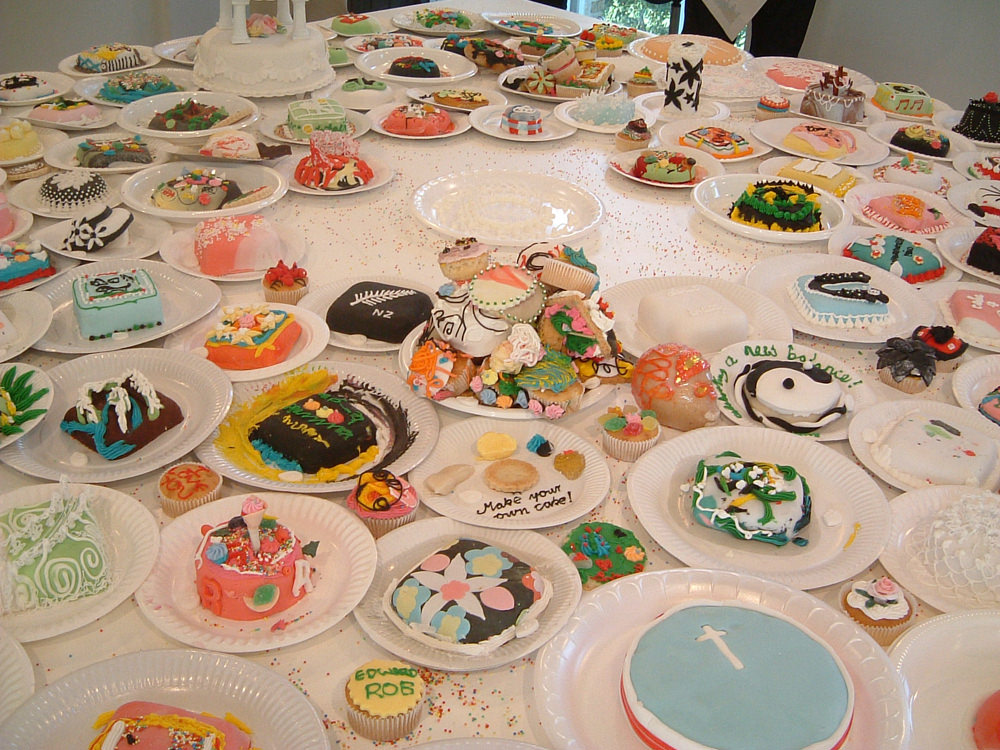
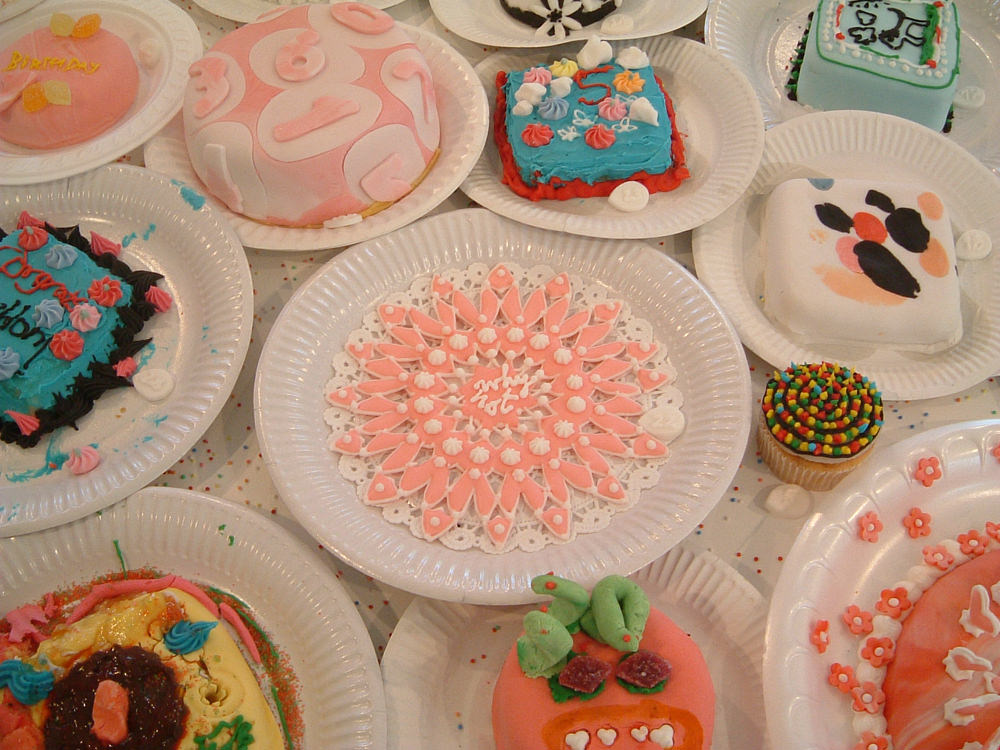
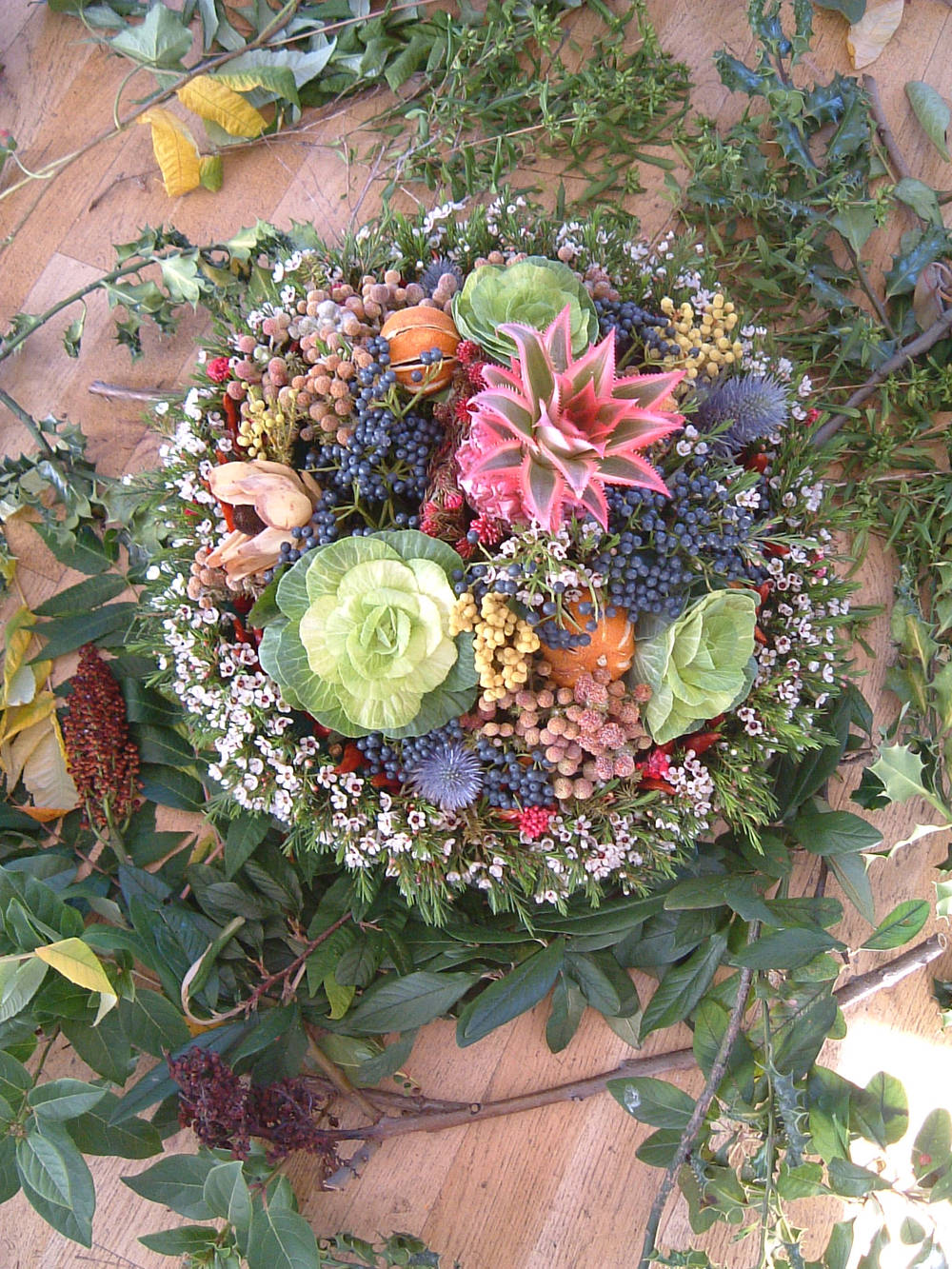
“ Ceremony was born out of a discussion about the relevance, application and value of craft skills in today’s society and the need to platform contemporary craft in visual arts venues, especially in London. An idea that we kept coming back to was the way that unique crafted objects play an integral role in the execution of traditional rites of passage, from the knitted christening shawl to the gold wedding ring and finally the floral funeral wreath. A period of research ensued and after contacting numerous artists, making many studio visits and having discussions with peers about this concept, we devised an exhibition that brought together an eclectic brew of works, performances and projects that explored the performative relationship between object and ritual. Many of the works and projects were especially commissioned for this exhibition and covered a diverse range of practices including cake decorating, metal work, film, knitting, live art, stone carving, quilting and floristry.
As well as exploring the rituals themselves, this exhibition provided a glimpse of the diverse range of craft practices and techniques used by contemporary practitioners. It gave exposure to under-valued skills such as cake decorating, floristry and knitting, and brought into question the traditional hierarchical domains of fine and applied art.”
(Text taken from the Foreward for Ceremony publication, written by Freddie Robins and Sandra Ross.)
Exhibitors were Barby Asante, Elizabeth Callinicos, Rachael Matthews (Cast Off), Tim Davies, Catherine Hawes, Rozanne Hawksley, Julie Henry, Serena Korda, Laura Potter, Freddie Robins , Chris Stewart, Hans Stofer, Shane Waltener and Welfare State International.
